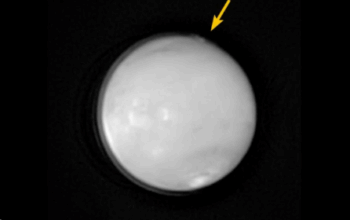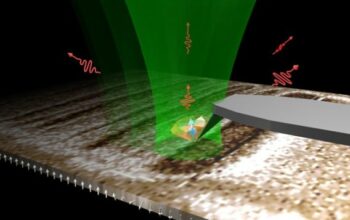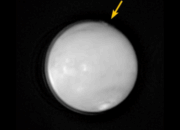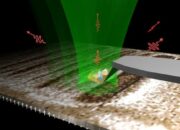Chromatic dispersion is an intriguing phenomenon experienced in optical fibers, profoundly impacting the fidelity and efficiency of data transmission. At its core, chromatic dispersion refers to the phenomenon where different wavelengths of light travel at varying speeds through a medium. This becomes particularly significant in the realm of fiber optics, where the transmission of multiple wavelengths—representing different data streams—is the cornerstone of modern telecommunication systems. Understanding chromatic dispersion not only highlights the complexities of light propagation but also underscores its crucial role in enhancing signal integrity across extensive fiber networks.
To begin, it is essential to delineate the theoretical framework underlying chromatic dispersion. Light comprises a spectrum of wavelengths, each corresponding to distinct colors. When introduced into an optical fiber, these wavelengths do not all traverse the medium uniformly. Typically, shorter wavelengths propagate faster than longer wavelengths, resulting in a temporal spreading of the light signal over distance. This discrepancy arises from the refractive index of the fiber material, which varies with wavelength—a property described by the Kramers-Kronig relations in optical physics.
The phenomenon can be classified into two primary components: material dispersion and waveguide dispersion. Material dispersion stems from the intrinsic properties of the fiber material itself. The refractive index changes with wavelength due to the material’s electronic structure and the vibrational motion of its molecules. Waveguide dispersion, on the other hand, is influenced by the geometric and structural characteristics of the fiber, including its core diameter and the nature of the cladding. By manipulating these design parameters, engineers can optimize fiber performance to mitigate the adverse effects of chromatic dispersion.
One might ponder why this topic incites such fascination. The answer lies not merely in the notion of light propagation but in the practical implications of chromatic dispersion on data transmission systems. In contemporary digital communications, where bandwidth might be maximized and data rates increased, chromatic dispersion poses a notable challenge. As multiple wavelengths are transmitted simultaneously through a single fiber strand, the temporal spreading caused by dispersion can result in inter-symbol interference. Such interference diminishes signal quality, potentially leading to errors in data interpretation.
Mitigating the effects of chromatic dispersion is therefore essential for optimally designed optical networks. Several strategies have been developed within the engineering community. One prevalent approach is the use of dispersion-shifted fibers. These specially designed fibers possess engineered refractive index profiles that minimize the dispersion at specific operating wavelengths. By concentrating on the zero-dispersion wavelength, network architects can enhance the reliability of long-haul data links.
Another technique involves the implementation of advanced modulation formats that are inherently resistant to dispersion. Techniques such as coherent detection, where both amplitude and phase information of the signal are utilized, allow for higher capacity and improved signal resilience. Furthermore, sophisticated signal processing algorithms can be deployed to counteract the effects of chromatic dispersion in real-time, thereby sustaining the integrity of the transmitted data.
While the engineering solutions are commendable, the underlying physics of chromatic dispersion invites a deeper philosophical consideration. It prompts inquiry into the nature of light itself. How can such a simple and fundamental entity as light—something that illuminates our world—exhibit such complexity when we attempt to harness it for communication? Chromatic dispersion is but one manifestation of how light’s behavior diverges from our simplistic intuitions. It serves as a reminder of the intricacies residing within the natural laws governing our universe.
Moreover, chromatic dispersion is a poignant example of how abstract physics concepts translate into tangible applications that catalyze societal transformation. The ability to transmit high-speed data across vast distances through fiber optics has revolutionized how we communicate, work, and interact. It embodies the interconnectedness of scientific inquiry and technological advancement. The challenges posed by chromatic dispersion serve as an impetus for continuous research and innovation in the field of optical engineering.
As we delve deeper into the subject, it becomes evident that chromatic dispersion is not merely an obstacle to overcome; it is also a window into the diverse landscape of optical science. The ongoing exploration of highly nonlinear fibers, photonic crystal fibers, and optical amplifiers exemplifies the dynamic nature of this field. Each investigation yields new insights, contributing to a growing corpus of knowledge that furthers our understanding of light-matter interactions.
In summary, chromatic dispersion is a fundamental phenomenon that impacts the efficiency of fiber optic communication systems. It serves as a momentous reminder of the complex interplay between light and materials, and it challenges engineers to innovate continually. As technology advances and data demands grow, mastering the intricacies of chromatic dispersion will remain paramount. The allure of chromatic dispersion lies not only in its challenges but also in its capacity to facilitate breakthroughs that redefine the boundaries of communication. Such a profound topic can ignite curiosity and propel scientific progression—enabling humanity to harness the power of light in ever more ingenious ways.










